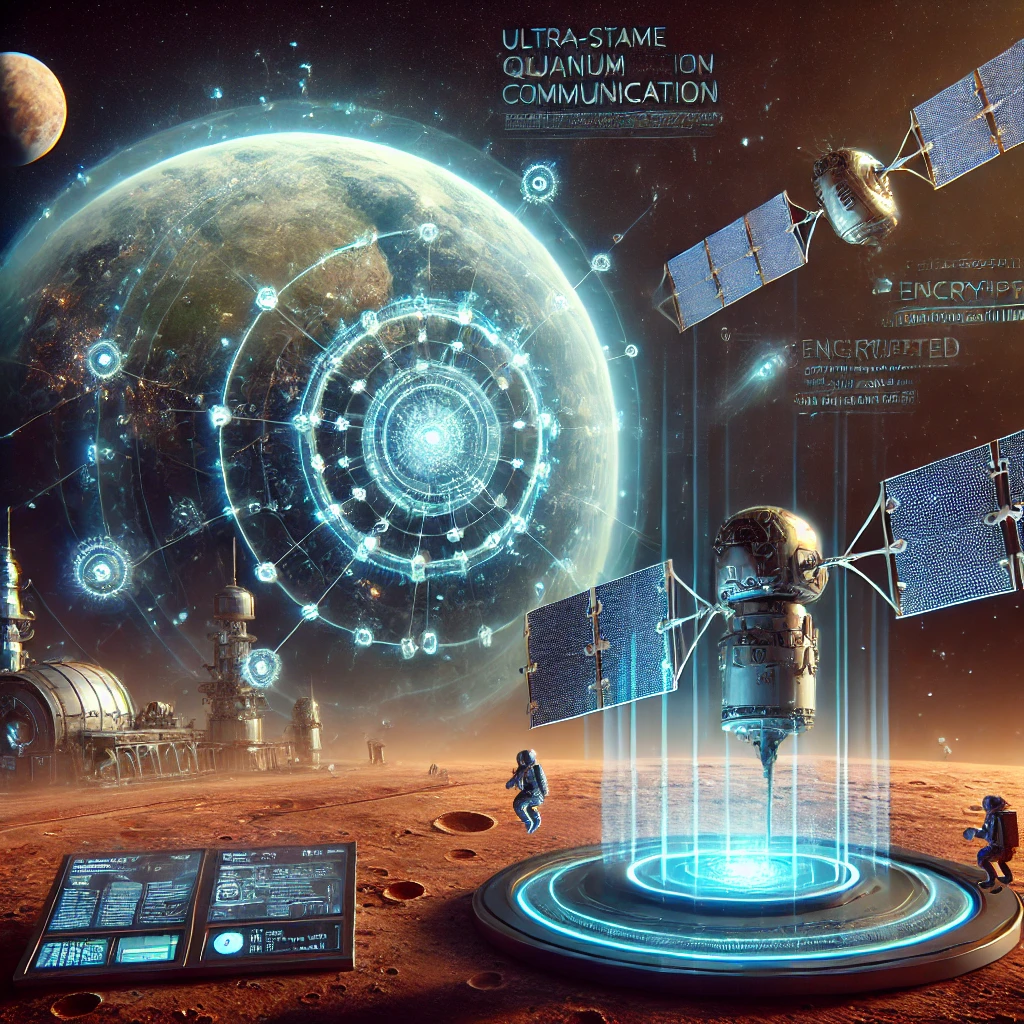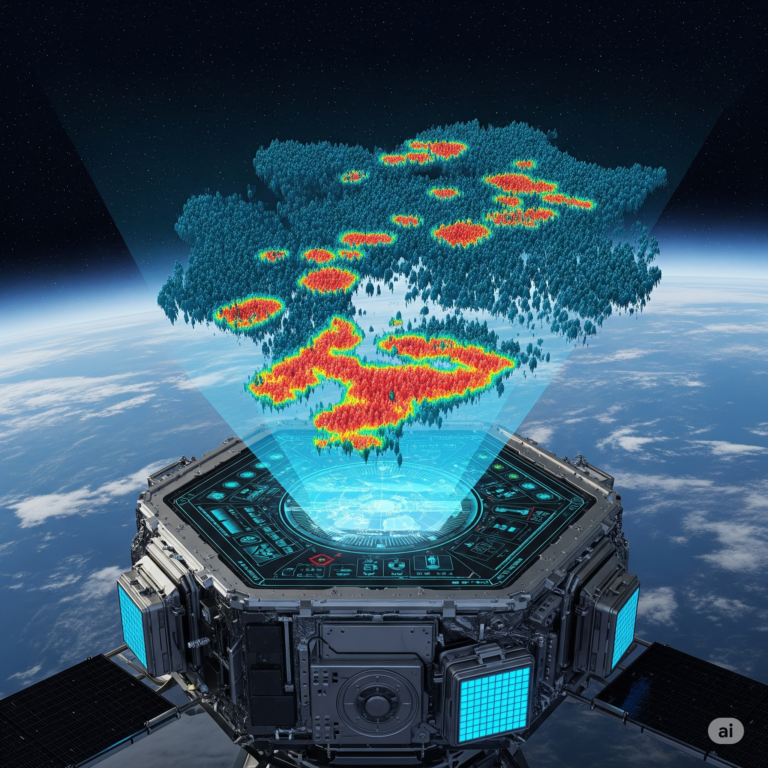Introduction
As humanity advances toward multi-planetary exploration, seamless and ultra-secure communication between Earth, the Moon, Mars, and beyond becomes a necessity. Traditional radio wave-based communication is limited by speed, bandwidth, and security challenges. However, a breakthrough in quantum communication—leveraging quantum entanglement and teleportation—could revolutionize interplanetary data transmission.
This article explores the concept of interplanetary quantum communication, its principles, potential applications, challenges, and the future of space connectivity.
Understanding Quantum Communication in Space
1. What is Quantum Communication?
Quantum communication is a technology that utilizes the principles of quantum mechanics to transfer information securely and instantaneously. Key concepts include:
- Quantum Entanglement: Two entangled particles remain connected regardless of distance, allowing instantaneous state changes.
- Quantum Teleportation: Information about a quantum state can be transferred without physical transmission.
- Quantum Key Distribution (QKD): A secure encryption method that prevents eavesdropping using the laws of physics.
2. Why Do We Need Quantum Communication for Space?
Traditional radio wave communication has limitations when applied to interplanetary distances:
- Time Lag: Signals take minutes to hours to travel across the solar system.
- Data Loss: Space environments cause signal degradation and interference.
- Security Risks: Quantum-based encryption provides unbreakable security, preventing cyber threats in space missions.
By using quantum communication, space agencies could establish instantaneous, secure connections across planets, improving real-time decision-making and mission coordination.
Applications of Interplanetary Quantum Communication
1. Secure Space Missions and Deep Space Exploration
- Quantum-secured command transmissions ensure that spacecraft and rovers remain immune to cyber threats.
- Secure data transmission from Mars, Europa, and exoplanet missions without interception.
2. Real-Time Space Internet for Astronauts
- Establishing a quantum internet between Earth and Mars would allow astronauts to communicate in real time without significant delay.
- Future space colonies on Mars and the Moon could be interconnected through quantum networks.
3. Advanced Scientific Research and Teleportation of Information
- Enables instantaneous synchronization of quantum experiments across different planets.
- Quantum teleportation of data could be used to explore black holes and distant celestial bodies.
4. Space-Based Quantum Cryptography and National Security
- Military-grade encryption for space agencies, ensuring ultra-secure transmissions.
- Secure satellite-to-Earth communication protecting sensitive data in deep space missions.
Challenges in Implementing Quantum Communication for Space
1. Quantum Decoherence and Space Environment
- Quantum states are highly fragile and can be disrupted by cosmic radiation and temperature fluctuations.
- Maintaining entanglement over interplanetary distances remains a major technological challenge.
2. Infrastructure and Technological Barriers
- Requires advanced quantum satellites and ground stations for quantum signal transmission.
- Needs space-compatible quantum processors and quantum repeaters to relay signals across vast distances.
3. Scalability and Cost
- Current quantum communication experiments are limited to low-Earth orbit (LEO).
- Expanding quantum networks to deep space will require significant investment and new research breakthroughs.
4. Policy and Ethical Considerations
- International agreements must regulate the ethical use of quantum technology in space.
- Preventing potential weaponization or misuse of quantum encryption.
The Future of Interplanetary Quantum Communication
1. Recent Developments and Breakthroughs
- China’s Micius satellite successfully demonstrated quantum key distribution (QKD) in space.
- NASA and private companies like SpaceX and Blue Origin are investing in quantum-based satellite systems.
- Researchers are developing quantum memory devices that could store and transmit entangled states across interplanetary distances.
2. Hybrid Classical-Quantum Communication Networks
- Combining classical radio signals with quantum networks to create hybrid interplanetary internet.
- Quantum-enhanced AI could optimize data transmission and storage for deep-space missions.
3. Next-Generation Quantum Satellites
- Future satellites equipped with quantum repeaters will allow global and interplanetary quantum connectivity.
- Deep-space quantum telescopes could use entanglement to study cosmic phenomena in real time.
4. Towards a Quantum Space Age
- Interplanetary quantum networks will pave the way for instantaneous Earth-Mars communication.
- The development of quantum AI for space navigation and exploration will enhance autonomy in missions to exoplanets.
Conclusion
Interplanetary quantum communication represents the next frontier in space exploration. By harnessing the power of quantum mechanics, we can achieve instantaneous, ultra-secure, and highly efficient space communication networks.
While technological and infrastructure challenges remain, ongoing research and investments in quantum satellites, entanglement experiments, and AI-driven quantum networks will push the boundaries of what’s possible. As humanity prepares to colonize the Moon, Mars, and beyond, quantum communication will be at the heart of our interplanetary future.









+ There are no comments
Add yours